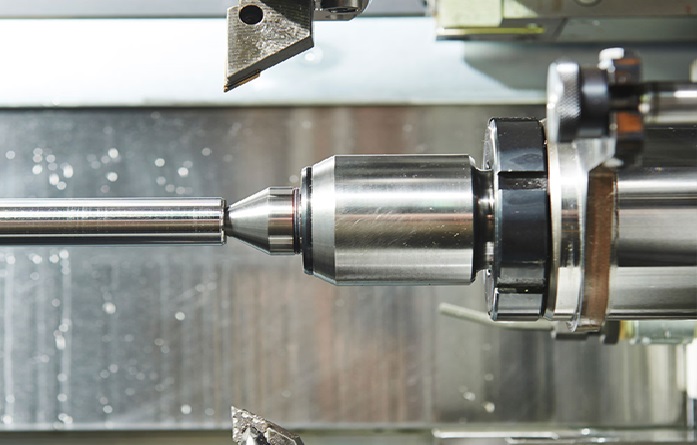For manufacturers, choosing between vertical and horizontal CNC turning service can be quite important. Each technology has its own strengths and weaknesses, and understanding them is key to selecting the right method for your specific project requirements.
This article compares vertical turning and horizontal turning, helping you decide which technology is best suited for your manufacturing needs.
Understanding Vertical Turning
Vertical turning, also known as a vertical lathe, features a vertically oriented spindle. In this setup, the workpiece is held in place by a chuck on the machine’s table, while the cutting tool moves vertically across the workpiece.
Advantages of Vertical Turning:
- Ideal for large, heavy parts: Vertical turning machines excel at handling heavy, bulky parts like large shafts, wheels, and other components. The vertical orientation allows gravity to support the part, reducing the chance of deflection.
- Efficient chip removal: Chips fall away naturally due to the vertical design, making it easier to clear the workspace and reduce downtime.
- Compact design: Because vertical lathes typically occupy less floor area than horizontal lathes, they are appropriate for establishments with constrained space.
Disadvantages of Vertical Turning:
- Limited length capacity: Vertical turning machines are less effective for long, slender parts that require support across their entire length.
- Slower setup times for smaller parts: The chucking system can be less efficient when dealing with smaller parts, leading to longer setup times compared to horizontal turning machines.
Understanding Horizontal Turning

Horizontal turning, the more traditional turning method, features a horizontally oriented spindle. In this setup, the workpiece is mounted between two centers or in a chuck, and the cutting tool moves horizontally along the workpiece.
Advantages of Horizontal Turning:
- Best for long, slender parts: Horizontal turning machines are ideal for manufacturing long parts like shafts, rods, and tubes, providing better support and precision across the length of the workpiece.
- Versatile tooling options: Horizontal lathes offer a wide range of tooling options, making them more versatile for producing both simple and complex geometries.
- Faster setup for smaller parts: For smaller workpieces, horizontal turning machines typically offer quicker setups and changeovers, increasing productivity.
Disadvantages of Horizontal Turning:
- Limited support for heavy parts: The horizontal orientation makes it harder to work on heavy parts without special fixturing. Large parts may sag or deflect due to gravity.
- Chip removal challenges: Horizontal turning machines can struggle with efficient chip removal, as chips tend to accumulate in the workspace, increasing the need for regular cleaning.
Choosing the Best Option for Your Projects
When deciding between vertical and horizontal turning, the choice largely depends on the nature of the parts you need to produce. If your project involves large, heavy components that benefit from gravity’s assistance, vertical turning is often the best option. It provides better stability and easier chip removal, making it ideal for industries like aerospace and energy, where large parts are common.
On the other hand, if your project requires long, slender parts or involves frequent changes in part size and complexity, horizontal turning offers more flexibility. Its tooling versatility and faster setup times make it a practical choice for industries like automotive manufacturing and general machining, where productivity and precision are essential.





